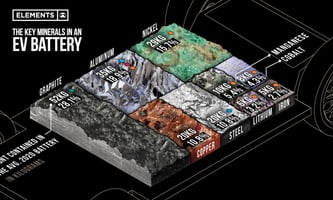How an M6 hole can ruin your Electric Vehicle launch!

A well-designed mechanical joint is important because it can withstand its forces while still providing the desired motion. A poorly designed joint can lead to premature failure of the component or system. From the hole diameter to the planned assembly method, this will be the death of many new EV programs. Stampings, casting, interior moldings, and much larger items make up the cost of an EV, but the 5-cent bolt/clip causes 1/3 of launch mistakes seen on a new EV platform.
.png?width=374&height=209&name=torqueCalculatorProTip%20(002).png)
- What's your plan for a bolted joint requiring torque?
-
The amount of torque that is applied to a mechanical joint can have a significant impact on its performance. Too much torque can overload the joint and cause it to fail, while too little can lead to sluggish movement and reduced performance. To ensure that your joint functions correctly, carefully controlling the torque applied are essential. Assume everything you predicted is wrong, and test till your fingers bleed because the specified torque is not a realized one. Hundreds of things affect torque ratings: drive type, angle torque, residual torque, finish, and much more. Talk to the assembly and take a class from us.
-
- What is your plan for welding?
- Welding can affect your mechanical joint in a few ways. First, it can add additional stress to the joint, leading to failure. Additionally, welding can create heat and distortion around the joint, leading to failure. Finally, the welding process can cause wear and tear on the joint, leading to decreased lifespan.
- Hole or No hole?
- Whether to use a hole or not changes your joining plans. Not all things weld. Not all items are easily bolted, so knowing all your options is essential. The hole diameter, stack thickness, heat treats, finishes, and a lot more will affect your actual assembly of the first vehicles. Please don't put it on cad, and hope for the best. Stay close to production, and make sure you know if the joint changes or an assumption doesn't prove true.
-
Fasteners are another critical consideration when designing a mechanical joint. Different types of fasteners will have other effects on the joint, so it is essential to choose the right one for the job.
For example, a bolt can create much stress on a joint, whereas a screw can cause less stress. Additionally, a bolt can be tightened more than a screw, increasing force on the joint.
When selecting a fastener, it is essential to consider the type of material the joint is made from and the environment in which it will be used. For example, if the joint is exposed to high temperatures or corrosive materials, you will need to use a special fastener that can withstand those conditions.
 Clips are used in the interior and exterior by the hundreds. Trim Clips, or what's called a Bird's Beak fastener, is the top used plastic fastener, and it's a problem for every automotive company on the planet.
Clips are used in the interior and exterior by the hundreds. Trim Clips, or what's called a Bird's Beak fastener, is the top used plastic fastener, and it's a problem for every automotive company on the planet.
Reach out to our team if we can help build a better system for designing clips.
-
- Whether to use a hole or not changes your joining plans. Not all things weld. Not all items are easily bolted, so knowing all your options is essential. The hole diameter, stack thickness, heat treats, finishes, and a lot more will affect your actual assembly of the first vehicles. Please don't put it on cad, and hope for the best. Stay close to production, and make sure you know if the joint changes or an assumption doesn't prove true.


